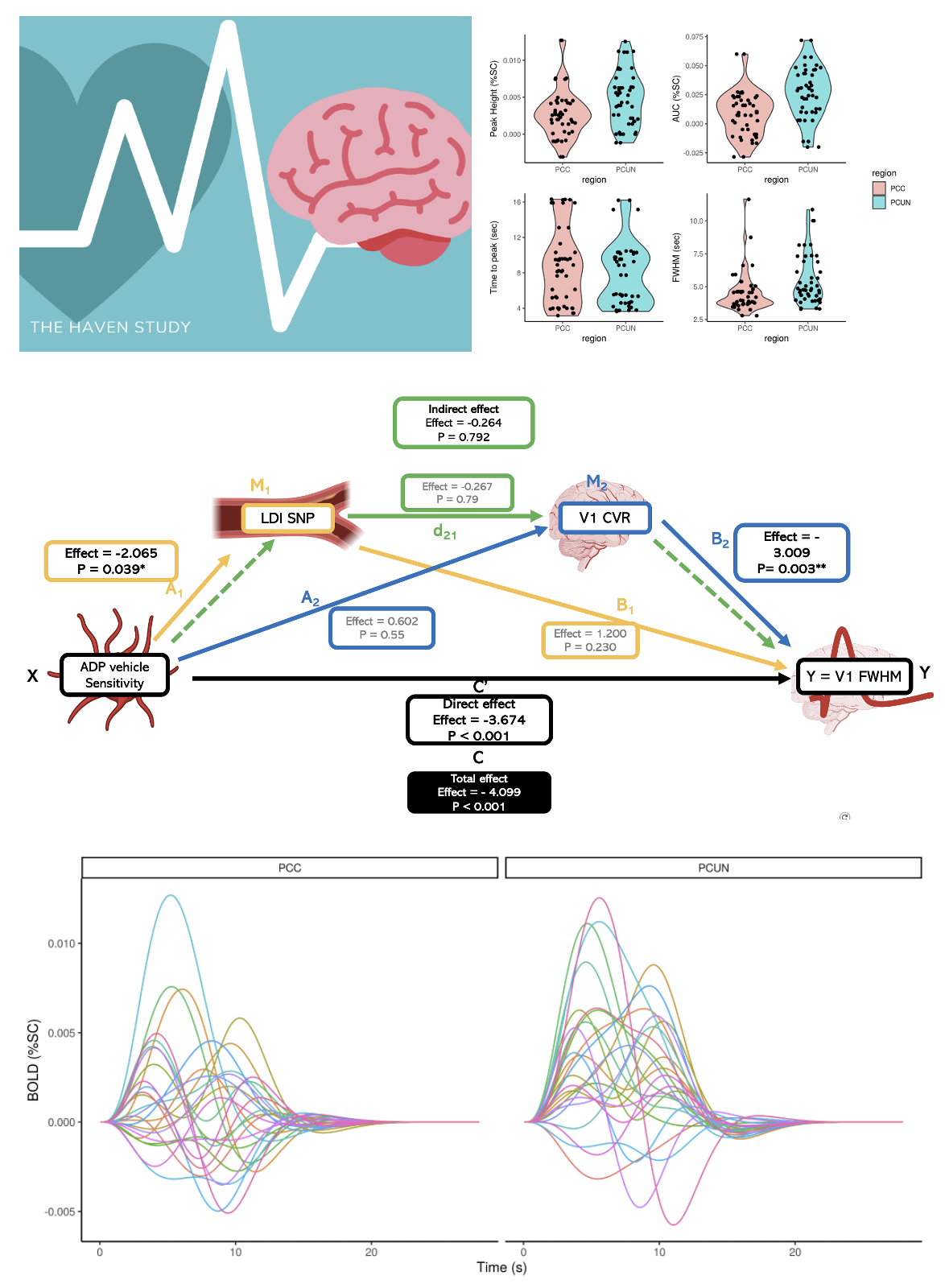HAVEN
Investigating the relationship between HAemostatic function, VEssel health and Neurocognitive Health

❤️ The purpose of the HAVEN study was to investigate whether blood function (e.g. how blood clots) can affect the health of blood vessels around the body and in the brain, and how this relates to cognitive function in older life. Previous research has shown that cardiovascular health conditions like high blood pressure, heart disease, and diabetes are linked to worse brain health and cognitive function in older adults. Further, there is some evidence that certain regions of the brain that are involved in memory may be particularly affected. However, we do not yet know exactly how blood vessel health can affect the brain. In particular, whether overall cardiovascular health affects only the blood vessels in the brain, the neurons, or the ability for blood vessels and neurons to work together in a coordinated manner. HAVEN investigated these relationships, and looked at blood markers to see whether we can identify and protect individuals at risk of developing cognitive decline.
🧠 HAVEN included several neuroimaging measures in order to assess cognitive function, brain structure and the health of blood vessels in the brain. To this end we specifically used structural MRI, functional MRI (fMRI), arterial spin labelling (ASL), magnetic resonance spectroscopy (MRS) and angiography. We performed additional analyses on this data including conventional voxel-based morphometry (VBM) using FSL, functional connectivity using CONN and deconvolution using FLOBS.
🕰️ Results/publications and open-access data coming soon!
🌐 Team:
University of Reading:
Professor Anastasia Christakou (Centre for Integrative Neuroscience and Neurodynamics, PI)
Dr Gabriella Rossetti (Centre for Integrative Neuroscience and Neurodynamics, Project Lead)
Professor Jon Gibbins (Institute for Cardiovascular and Metabolic Research)
Professor Julie Lovegrove (Hugh Sinclair Unit for Human Nutrition)
Dr Joanne Dunster (Department of Mathematics and Statistics)
(Images courtesy of Dr Gabriella Rossetti)